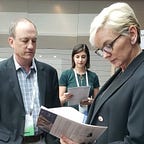The Fireproof Home
In an age of tech savvy passive houses, can a passive brick home holds its own?
Driving to work through the Marshall Fire burn zone each day is a stark reminder of how quickly our firmly established sense of security can be ripped away from us in a flash. It took just one day for the Marshall Fire to destroy over 1,100 homes that, according to my traditional understanding of wildfires, were located nowhere near high-risk wildfire zones. These homes were built in suburban neighborhoods on the plains, not in the Rocky Mountains which directly face us, where over the past decade we have become used to watching the forest fires burn during our August evenings. We have gotten used to the smell of smoke.
What I can’t get used to is the burn mark on the back of our Alpen manufacturing building (it was that close), or the idea that forest fires are now called wildfires and for good reason — they are not limited to the forest anymore. In the case of the Marshall Fire and the recent Lahaina (Maui) Fire, the fires were propelled by hurricane force winds. And when that happens, things get scary, because the winds not only push the fire along its path in a much faster fashion, but the wind also carries and drops burning cinders onto buildings miles away from the actual fire.
This is what happened with the Marshall Fire. It is why Target and Costco shoppers in Superior were forced to evacuate the stores and run to their cars in the parking lot when the fire itself was still miles away. The burning cinders had landed on Costco’s rooftop and had started a fire. Before long, homes in the suburbs just a few miles away were also smoking; the burning cinders pushed by the winds having found their places in the eves and the nooks of the homes in multiple Louisville/Superior neighborhoods. Six hours later the fire was pretty much over, and thousands of people had been displaced. So many people lost everything.
Though my personal home was outside of the burn zone, I felt a strong connection to the community affected following the fire, mostly because I work in and around the neighborhoods that burned. Our building got a bit scorched, but when I say these folks lost everything, I mean it. Nothing was left of most of the homes nearest our offices but a black square in the ground. Everything these families had saved over the years — records, photos, mementos, artwork — all gone. During the first year I had a hard time not wondering what that might feel like daily. Is anything permanent in the face of climate fueled wildfires?
Fortunately, I don’t feel that way anymore, because I get to be part of the solution for these families — the building of their next home. There are some super modern passive home rebuilds taking shape in the Marshall Fire rebuild zone, which are interesting when juxtaposed with the seeming simplicity of the Colorado Earth Home; a modern adobe home that has caught the local media’s attention. At a time when everyone is focused on high tech materials, this home is built with foundational building blocks made from dirt (and a few other important ingredients) just down the road in Golden by a local entrepreneur named Lisa Morey who truly cares about climate change.
The homeowners have embraced Morey’s company, Colorado Earth and its earthen blocks, and at the same time they are intensely focused on creating a high performance envelope, which is core to the passive house concept. According to the home’s designer, Morey, the Colorado Earth home will have, “as tight of an envelope as other passive houses, but it isn’t advertised that way.”
The Colorado Earth bricks literally “breathe.” They are made from natural material and sourced locally, and most importantly they are fireproof. That’s right, fireproof. This home, plus the other passive house being built next door were recently featured by popular YouTuber Matt Risinger, who does a great job explaining everything I just wrote above, in video format. Check out his videos below:
If you are curious about how Colorado Earth bricks are different from traditional adobe and have questions, please comment below.
-end
